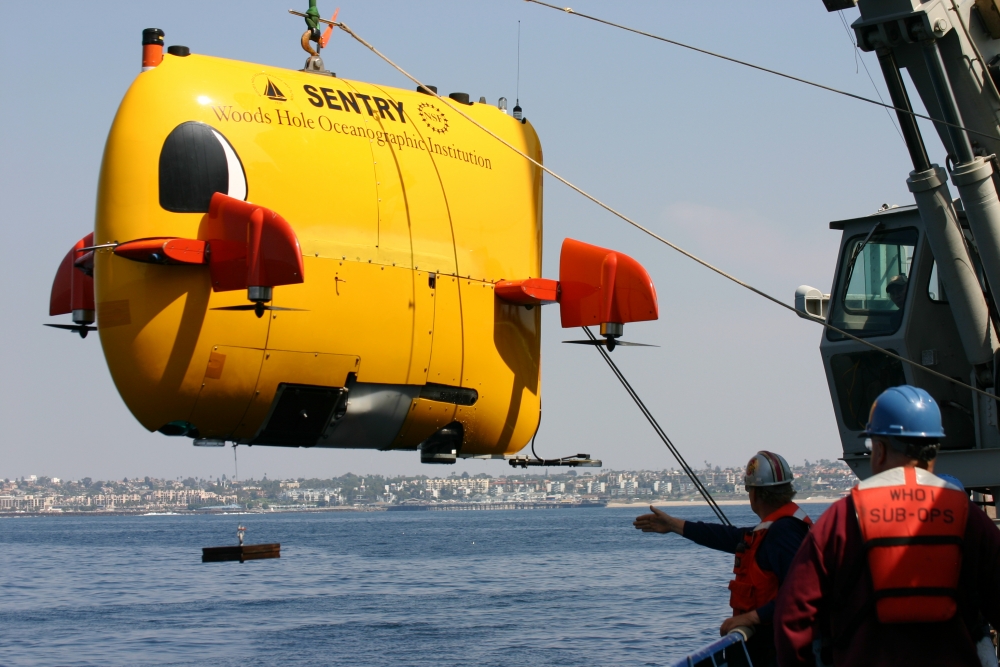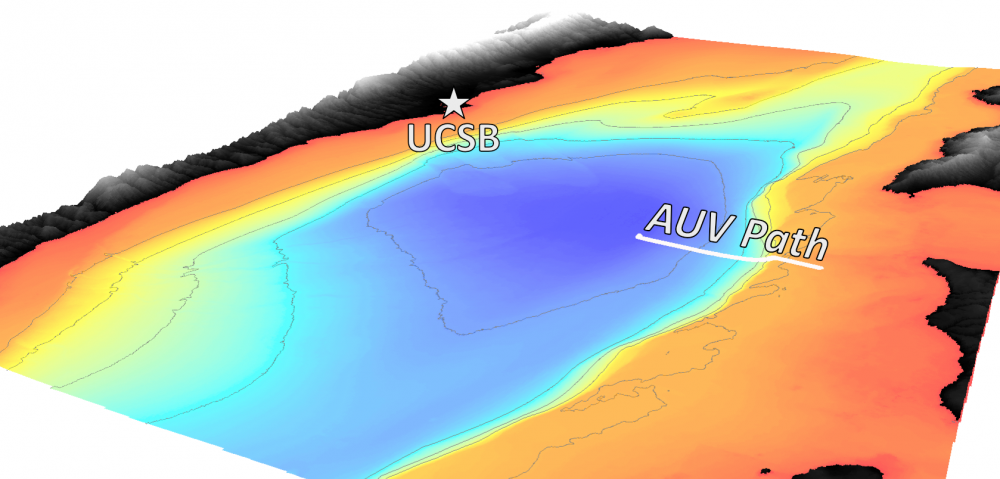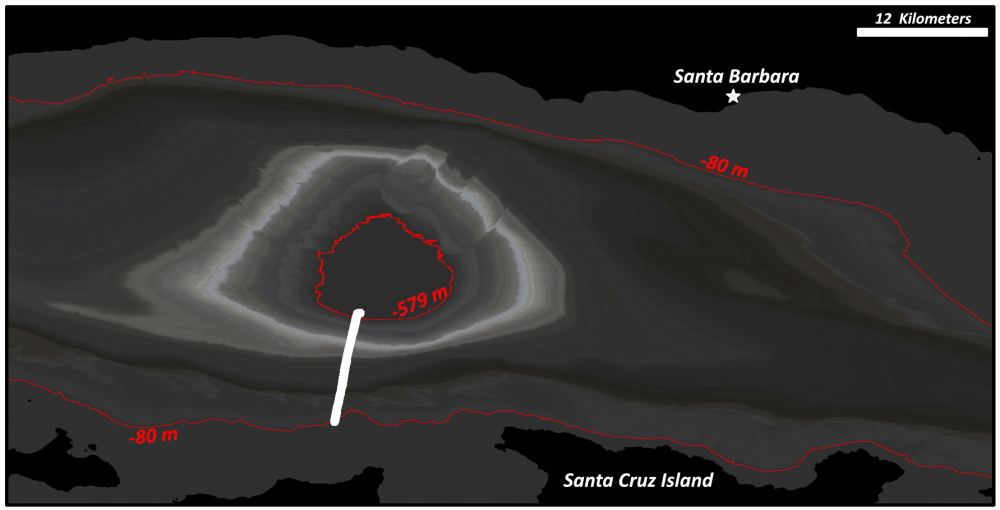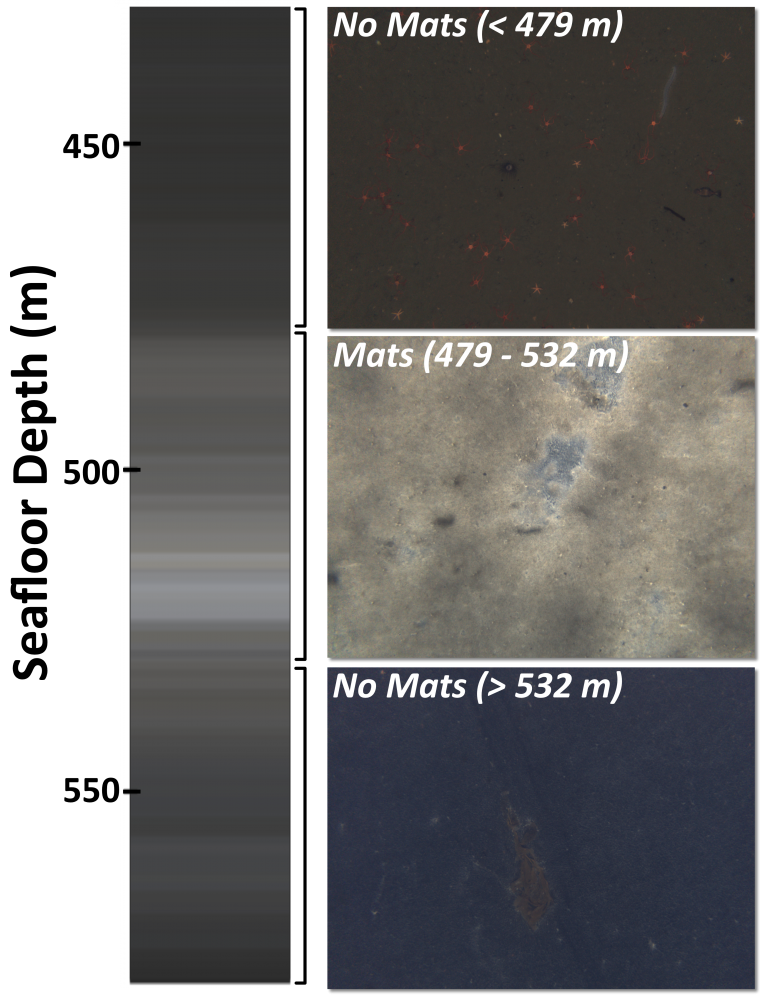Deep Sea Bacterial Takeover
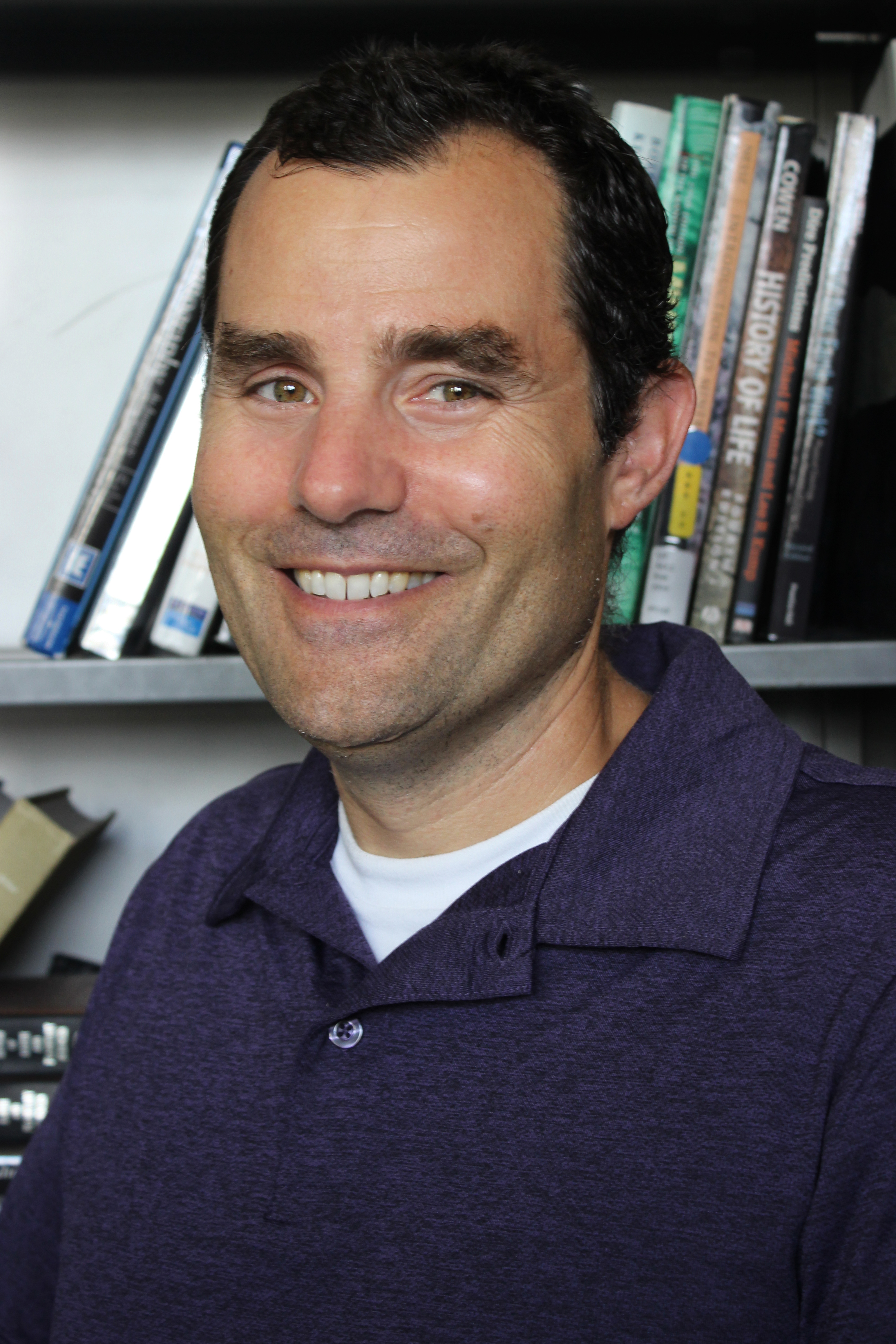
Situated between the shoreline and the northern Channel Islands, the Santa Barbara Basin is like a giant underwater bathtub. Like many tubs, it has a ring — in this case, a microbial watermark of epic proportions.
The ring itself was a fluke discovery made by UC Santa Barbara oceanographer David Valentine and his team while on a research vessel in the basin. The scientists used the autonomous underwater vehicle Sentry to conduct a robotic photo shoot, amassing more than 62,000 images of the ocean floor.
To their surprise, the images revealed a mile-long bacterial colonization in the form of a sulfur-encrusted white-colored mat that coated the sea floor. “It was like a blanket of snow draped over the otherwise darkened sea floor, but present only within a narrow depth interval,” Valentine explained. The findings appear in the journal Environmental Science & Technology.
“We think the colonization is seasonal and critically important to the regional deep-sea ecology offshore Santa Barbara,” said Valentine, a professor in the Department of Earth Science. “We expect similar bacterial colonization along the full 66-mile circumference of the bathtub ring because the water chemistry supports it.”
According to Valentine, this bathtub effect is a key driver of his team’s observations as it takes into account the stagnation and oxygen loss that occurs at depths greater than 1,500 feet. “We think it is this environmental context that sets the stage for a bizarre and highly visible bacterial migration,” he said.
By bacterial standards, the microbes imaged by the researchers are huge, forming nearly inch-long filaments visible to the naked eye. Within these filaments, the bacteria harbor the capacity to store key components needed for their survival: sulfur and nitrate — the equivalent, for humans, of food and air. The bacteria are also able to migrate short distances, including burrowing into the sea floor or dangling their filamentous bodies into the water while anchoring themselves to the sea floor.
To corroborate their findings, the investigators searched for data from long-term monitoring projects and found that the California Cooperative Oceanic Fisheries Investigations had collected data two months before and after the images were recorded by Sentry. This data revealed that the microbial mats existed at the time and location that corresponded with removal of nitrate salts from the overlying water.
“This gave us new insights about their bizarre lifestyle and how they could impact the ecology of this deep-sea region,” Valentine said. “Combining our findings with historical ocean time series data from the Santa Barbara Basin led to the realization that these bacteria seasonally coat the sea floor when oxygen in the water declines to near zero but when nitrate salts are present. At the sea floor, we think they actively accumulate the nitrate salts, which they store inside the cell. Once the nitrate is removed from the seawater — which takes months — they again disappear from the sea floor.”
The researchers posit that seasonal changes in the chemical bathtub ring create a repetitive cycle. The microbial bathtub ring first appears at the deepest reaches of the basin in the summer months and expands up the walls through winter, only to disappear in the spring when the stagnated waters are flushed away. Then the cycle repeats itself.
“There are a few reasons that is significant,” Valentine said. “First, the cycle is likely a driver of the ecology out in the deep ocean, at least in this area. Second, the amount of nitrogen taken up by these organisms seems to be much higher than even agricultural farmland, which is pretty incredible. Third, this could also be the largest contiguous microbial growth on Earth, although that’s tough to verify.”
In addition to Valentine and graduate student Jon Tarn, the team included scientists from Woods Hole Oceanographic Institution, the Australian Centre for Field Robotics at the University of Sydney and the University of Texas at Austin.
